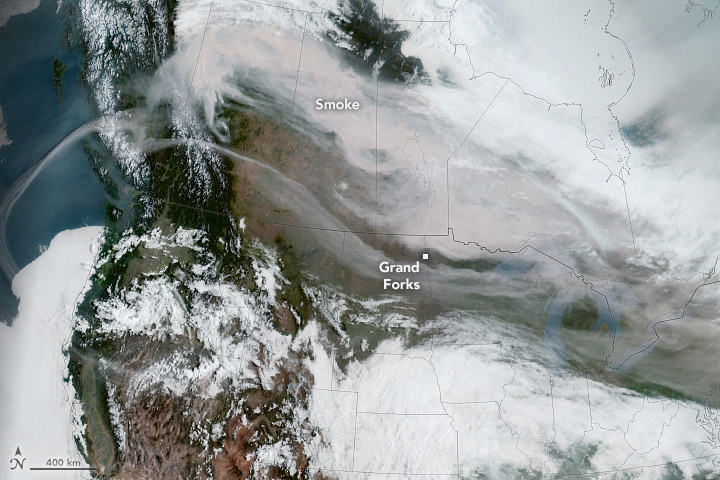CNBC – Wildfires burning across western Canada have forced thousands of people to evacuate their homes and have prompted some oil and gas companies to curb production as blazes approach pipelines.
The smoke also has caused poor air quality and hazy skies in parts of southern Canada, as well as in North Dakota, Minnesota and several other states. The spread of the smoke, which contains particles called aerosols, has prompted concerns over the impact of poor air quality on respiratory and cardiovascular health.
The fires have burned about 478,000 hectares, or 1,800 square miles, across Alberta, British Columbia and Saskatchewan as of Monday — 10 times the average area burned for this time of year, according to the NASA Earth Observatory.
There were nearly 90 fires burning in the province of Alberta, a quarter of which are expected to get larger, according to the Canadian Wildland Fire Information System. More than 20,000 people have had to evacuate their homes.
The fires have had a notable impact on the region’s oil industry, as some drillers were forced to halt a small percentage of production in a precautionary measure due to shifting fire conditions. This week, benchmark Canadian heavy crude prices tightened to multi-month highs over concerns about the blazes.
Nearly 2.7 million barrels of daily oil sands production in Alberta is in “very high” or “extreme” wildfire danger zones, according to Rystad Energy, an energy consulting firm.
As of Monday, outage volumes stood at about 240,000 barrels of oil equivalent per day. However, the ultimate damage to production will likely exceed that number, Thomas Liles, vice president of Rystad Energy’s upstream research, wrote in a market update.













Comments are closed
Sorry, but you cannot leave a comment for this post.